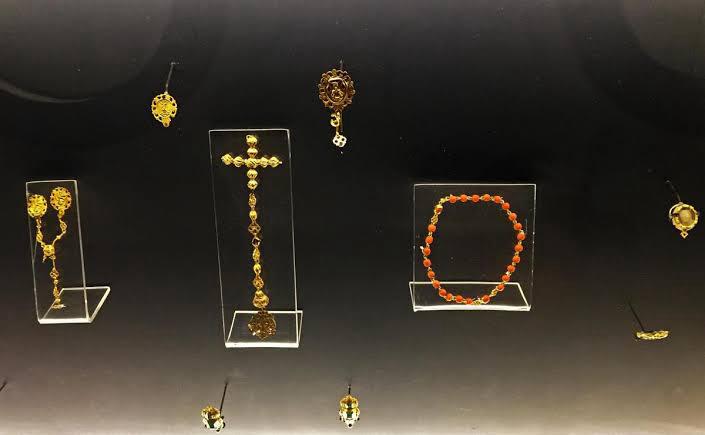Specialists from Mexico, Spain, and Colombia study a treasure, now on display, of gold jewelry, emeralds, and diamonds that they found on an 18th-century Spanish ship discovered by a team from the National Institute of Anthropology and History (INAH).
“We call it the ‘Treasure of Alacranes’ and it is made up of 420 pieces that are part of an interdisciplinary investigation, in which the work of archaeologists, jewelry, gems, metals, and engineers converges,” Helena Barba explained to EFE, responsible for the Yucatan Peninsula Office of the Subdirectorate of Underwater Archeology (SAS) of the INAH Campeche Center.
The archaeologist, who is vice president of the Scientific and Technical Advisory Board (STAB) of the UNESCO Convention, revealed that they discovered the treasure in the Alacranes Reef.
“In the last 20 years we have found 39 shipwrecks in Alacranes, which is a trap for navigation and we still have a long way to go, because we have barely 5% of exploration in that place,” he added.

Although most details of the treasure are barely revealed, the discovery of the ship occurred in 2018.
The latest investigations show that it is a ship from the 18th century “because the nails that were attached to the wood that no longer exists are made of a copper alloy that was invented and began to be used in the late 1780s.”
One of the hypotheses indicates that the ship could be one of the Tierra Firme Galleons that connected Spain with the viceroyalty of Peru.
“What stands out most about this shipwreck is its treasure, which is barely 1% of the cargo, which will surely be in the part of the reef that today is full of fire corals and will remain that way for the rest of its material life,” he indicated. Beard.
The cargo added the archaeologist, “is a treasure, not only because of the gold, emeralds, and diamonds, but because it speaks of the daily life of trade and naval routes of the 18th century, something difficult to find in a shipwreck.”
Thanks to international research, the INAH concluded that the gold is 24 carats, so its origin may be from Colombia, Venezuela, Panama, or Oaxaca, a state in southern Mexico, while the diamonds may be from Brazil. The collection includes rings, medals, lockets, rosaries, buttons, shoe buckles, cufflinks, and 15 gold, emerald, and diamond toothpicks. It is now in the permanent exhibition “The Treasure of Alacranes”, at the El Fuerte Museum of Underwater Archeology in San José El Alto, in Campeche.
TYT Newsroom


